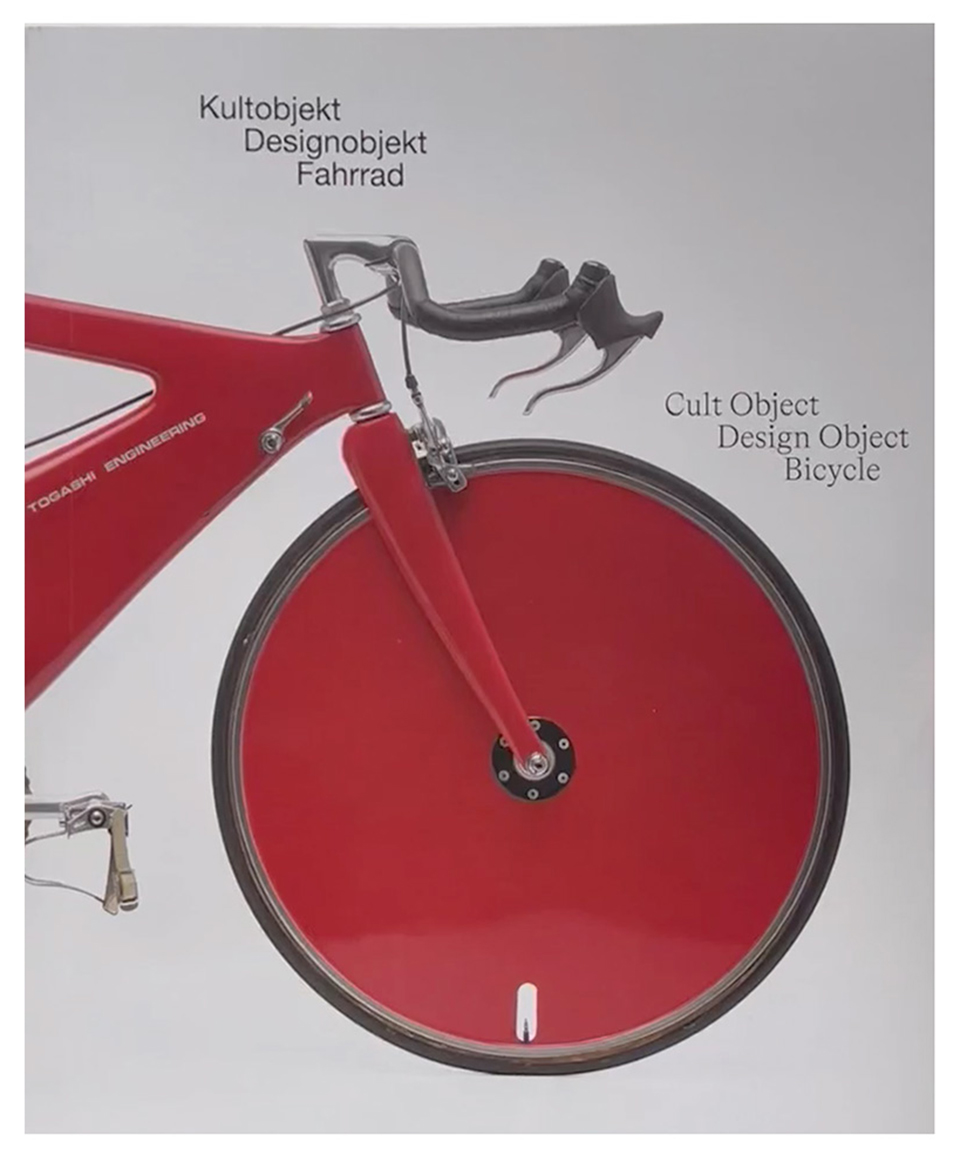The bicycle Cult object Design object
About the Exhibition
The exhibition puts the topic of bicycle design in the limelight for the first time. The focus is thus on the design and not on the cultural history of these means of transport with all the different developments it has gone through. No less than 70 examples will be showcased that are among the most unusual and most exciting bicycles in design history.
Today’s bicycle boom needs to be seen not only against the background of a growing awareness of health issues, sustainability, and environmental protection, but also embodies a feeling for life that stands for flexibility, mobility, a work/life balance, sports, and also (influenced by the pandemic) for safety. Be it fast or slow, by the power of one’s own muscles or by an electric motor, the bicycle offers possible solutions for the transportation and mobility problems of our cities; the bicycle changes our leisure time behavior. No two bicycles are the same, as bicycles are not purely utilitarian objects or just the most widespread means of transport in the world, but also design and cult objects, where technology, function and aesthetics go hand in hand.
Bicycle design is closely bound up with the history of technological innovations, be it the drive systems, the suspension, brakes, gear shifts or other components. The material with its particular properties (wood, iron, steel, aluminum, magnesium, titanium, plastic, carbon, etc.) plays a decisive role in the frame design, for the weight or the aerodynamics, as does the manufacturing techniques used, which extend from classical frame-building using tubes (welding, butting, soldering, screwing, slotting, gluing) or mold-casted or pressed metal or plastic frames through to frames made on 3D printers.
Bicycle design is certainly not just about the skill of the craftsmen and the art of frame-building, not just the product of ingenious inventors, tinkerers, obsessed or enthusiastic amateurs, as can be seen from the countless designs by aerospace or automobile engineers, such as Paul Jaray, Hermann Klaue or Alex Moulton as well as by industrial designers including Luigi Colani, Richard Sapper, Michael Conrad, Giorgetto Giugiaro, Marc Newson, Christian Zanzotti or Ross Lovegrove.
Plan a visit
Where?
-
Barer Straße 40, 80333 Munich
Opening hours:
-
Daily 10:00 – 18:00
-
Monday closed
-
Thursday 10:00 – 20:00
Highlights
-
Exhibition view, The bicycle Cult object Design object, 2023.Photo: Die Neue Sammlung (K. Mewes)
-
Detail Exhibition Architecture, The bicycle Cult object Design object, 2023.Photo: Die Neue Sammlung (K. Mewes)
-
View of the exhibition, The bicycle Cult object Design object, 2023.Photo: Die Neue Sammlung (K. Mewes)
Text in the Exhibition
Play Audio
The bicycle has long since ceased to be more than a means of locomotion; it also stands for sports, health, lifestyle, and sustainability. The bicycle has thus become not only one of the most widespread means of transport worldwide, but more than ever a cult object.
The design of bicycles is closely bound up with the history of technical innovations and manufacturing processes. This can be seen, for example, from the drive system used, the suspension, and the wheels, but also and especially from the frame and the materials used for it. Design and technology increasingly meld, with bike makers taking things to the very limits of what is feasible.
This exhibition is devoted to the high points of bicycle design: Starting with Karl Drais’ Running Machine, and Penny Farthings and safety bicycles, through to folding bicycles and everyday bikes or sports cycles today. The spectrum extends from handmade frames or industrial mass production to bicycles made with a 3D printer. All these bicycles show how the design has revolutionized both cycling itself and the world in which we live.
Details Bicycles
-
Itera Development Center AB, Itera Plastcykel, Detailaufnahme, Schweden 1980/1982.Foto: Die Neue Sammlung (K. Mewes)
-
Franz Grundner, Bambusfahrrad Bamboo bicycle, Detailaufnahme, Österreich ca. 1998.Foto: Die Neue Sammlung (K. Mewes)
-
Togashi Engineering, Straßenrennrad Detailaufnahme, Japan 1989.Foto: Die Neue Sammlung (K. Mewes)
-
Cycles Lida, Fahrrad Guip, Detailaufnahme, Belgien ca. 1939.Foto: Die Neue Sammlung (K. Mewes)
FAQs
-
Curated by:
Josef Straßer
-
Co-operation partner:
Deutsches Fahrradmuseum, Bad Brückenau
